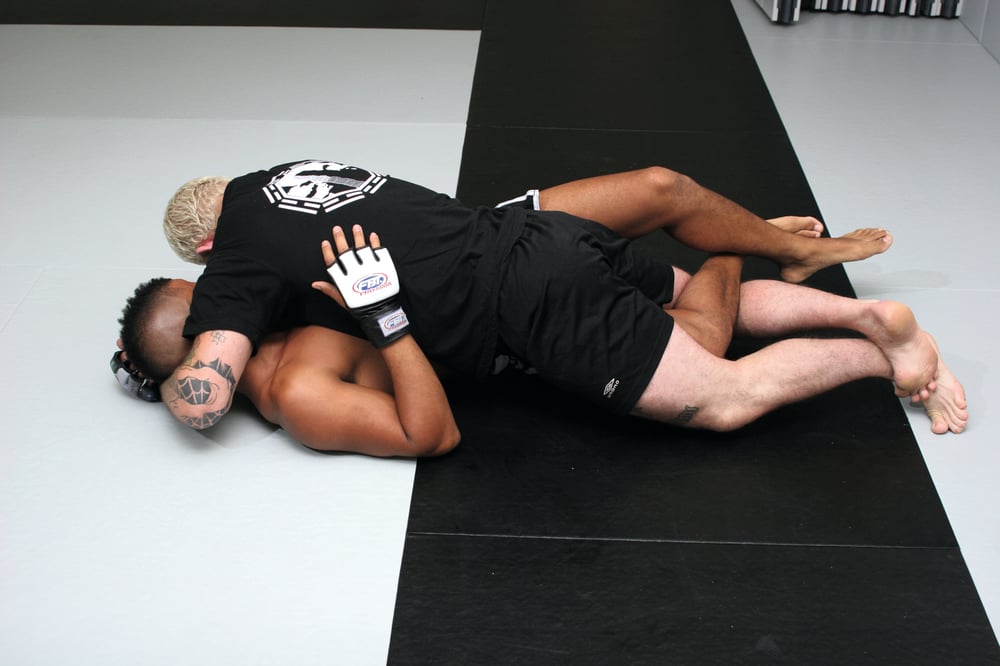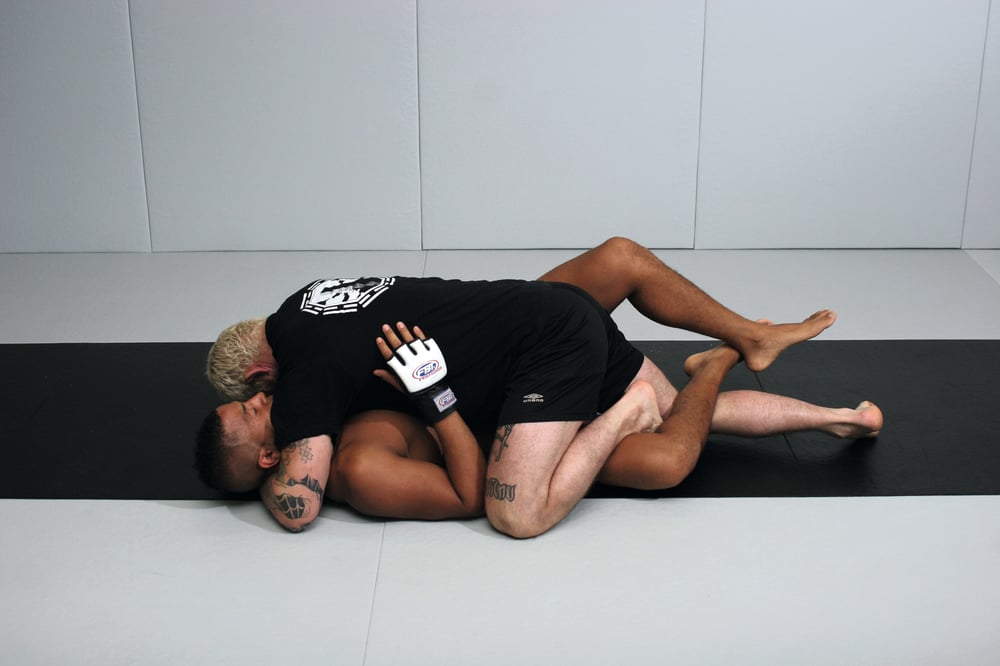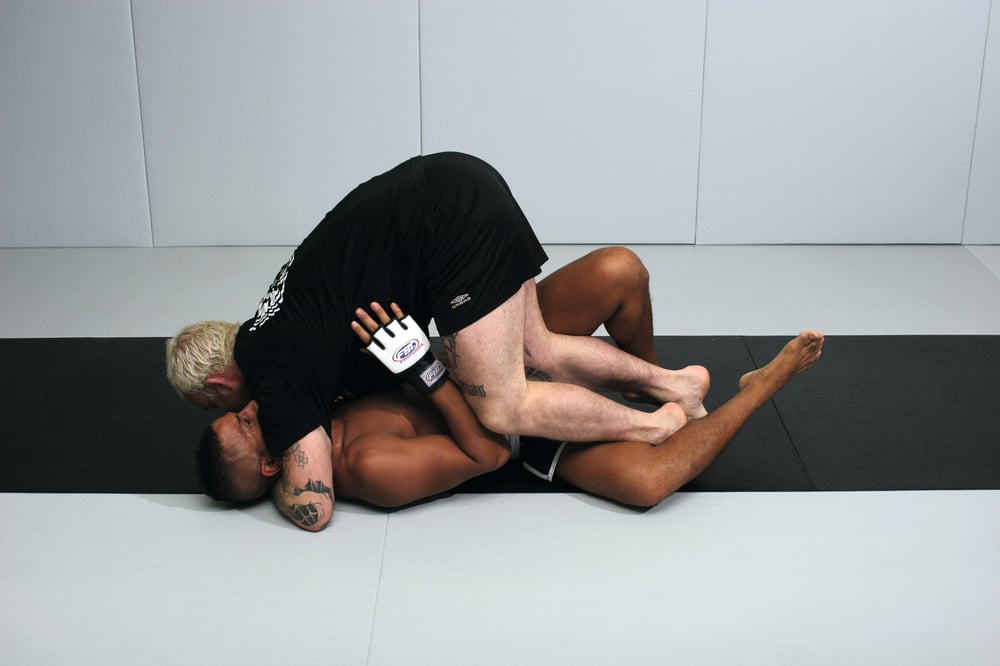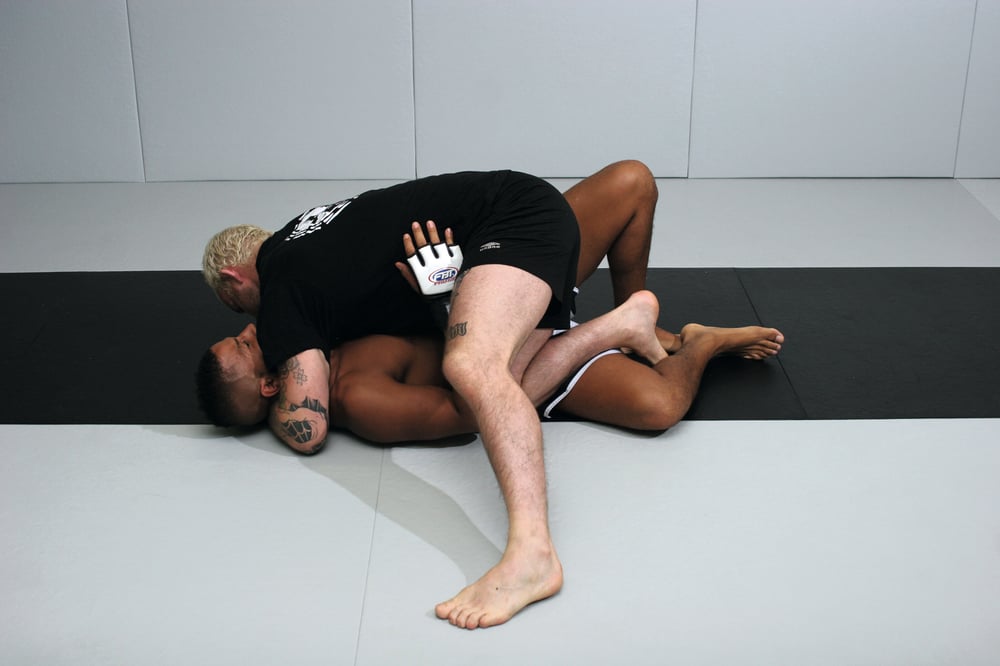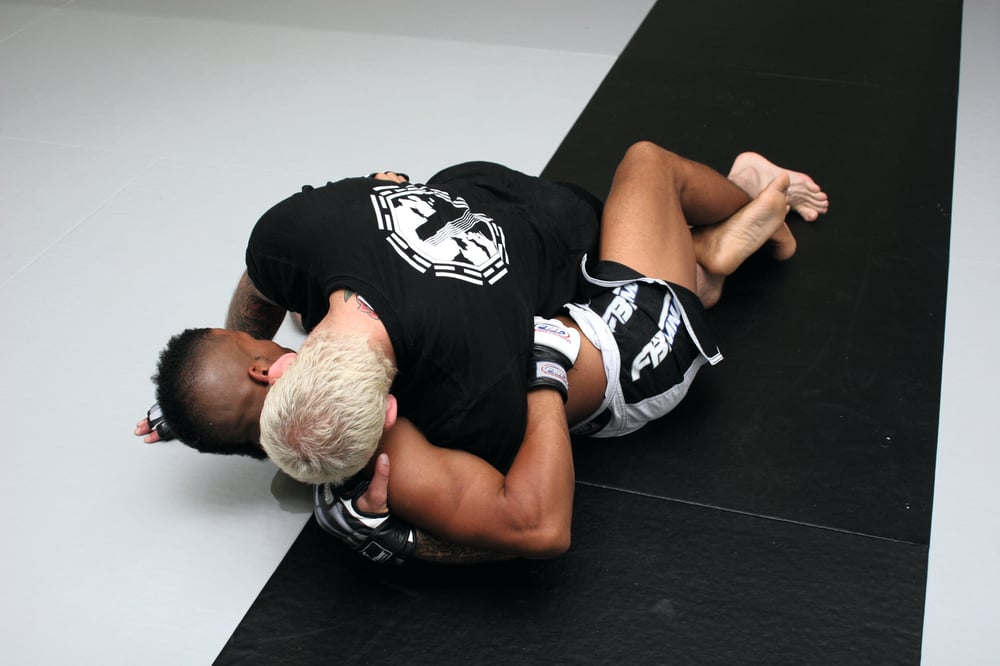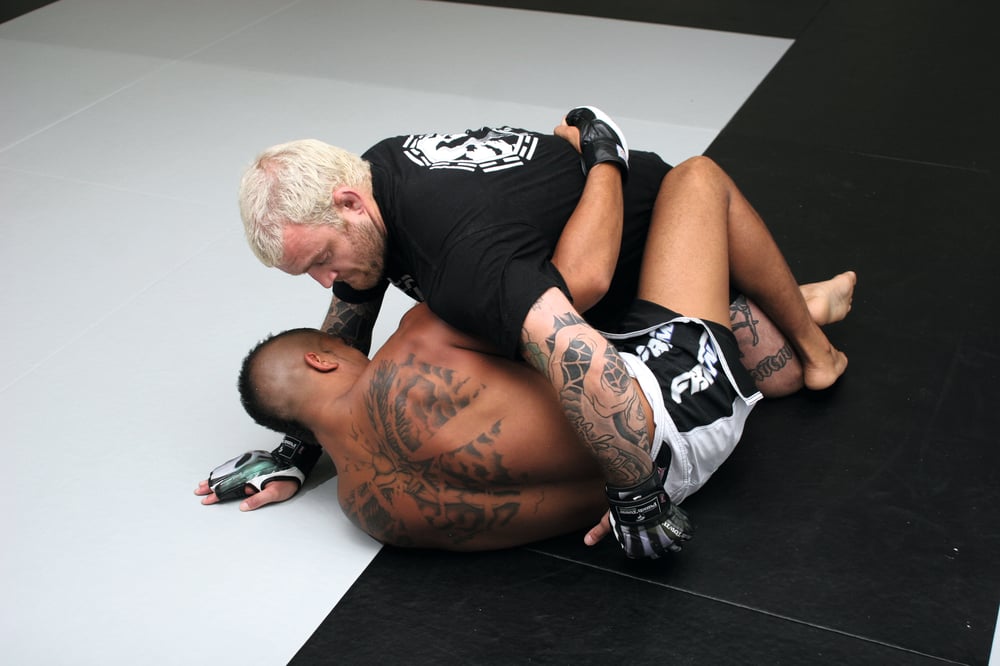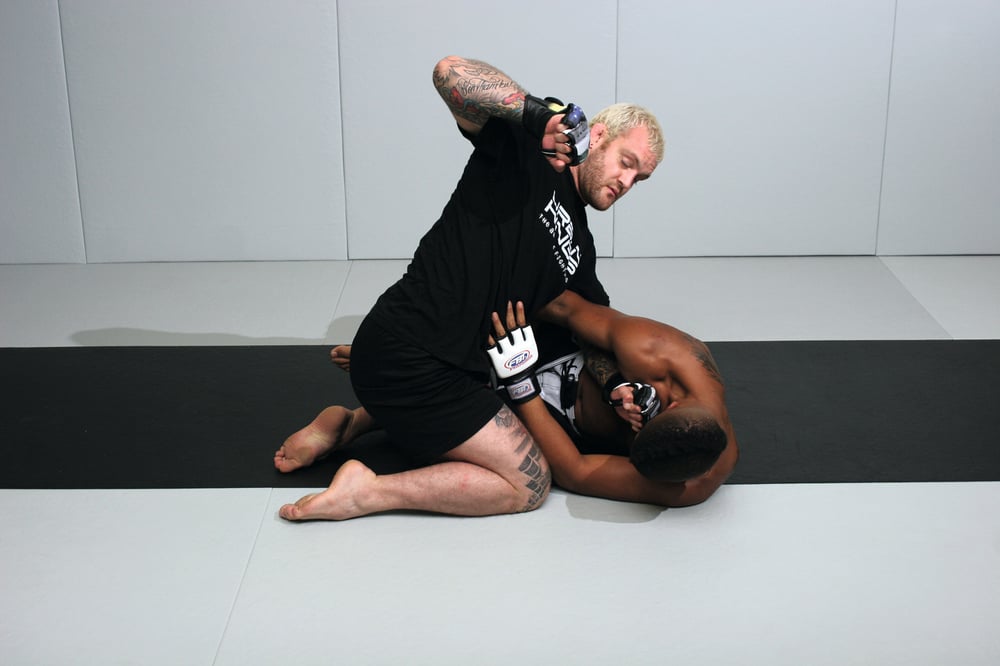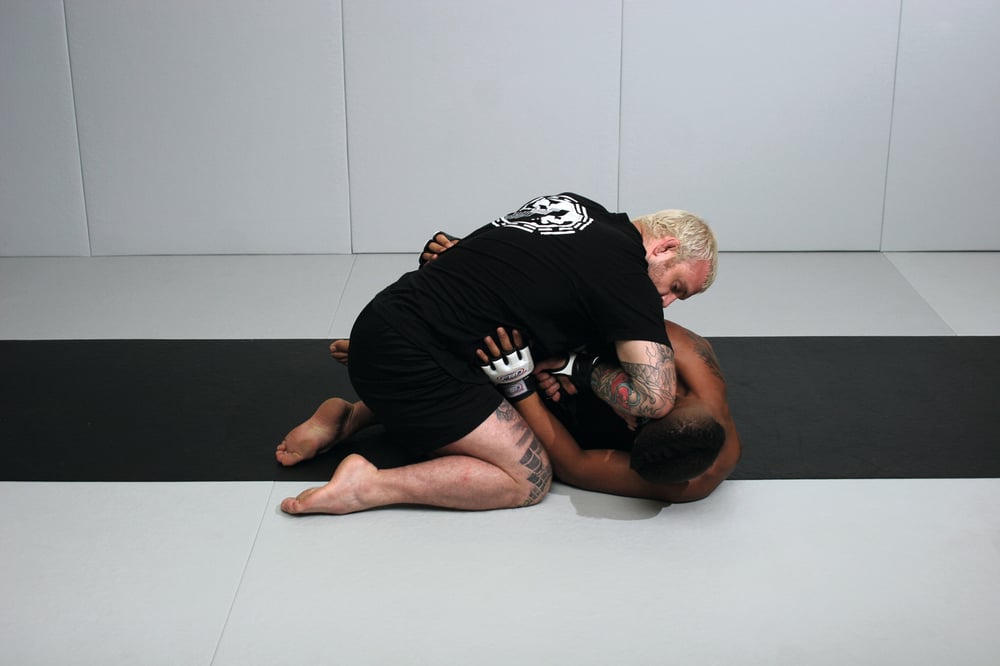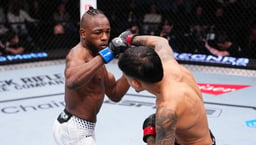
Issue 070
December 2010
Peter Irving is a professional welterweight fighter and Fighters Only’s resident fight expert for the last three years. Irving has fought in Europe and the USA and coaches fighters in London.
Underhook
The underhook on the far side often determines who has control of the position, opening up possibilities to sweep for the bottom man, or to pass for the top man.
Head position
The top man should keep his head in tight, looking inward towards his opponent to aid the pin and not allow the bottom man to re-pummel his underhook.
Leg entanglement
Many distinct styles of half guard have emerged over the years, like the lockdown and deep-half. This month we deal with the traditional half guard – the top leg ‘triangled’ over the bottom, hooking, leg.
Hand position
While leaving a hand on the mat is the cardinal sin of the closed guard, not so with the half guard. Should your opponent succeed in reguarding, you must immediately correct your hand position.
The pin
If the bottom man’s pinned flat on both shoulders his opportunities to sweep or escape are severely limited. It’s important for the top man to pin the bottom man’s shoulders and hips all the way through the pass, or at least neutralize hip and shoulder movement to ground ‘n’ pound.
It was once seen as simply a halfway house between side control and full guard. But the half guard’s now understood as a highly effective offensive position. In both mixed martial arts and gi or no-gi grappling competitions many players actually prefer half guard over the full guard because of the array of possibilities for sweeps and escapes. Being able to pass the half guard is one thing. Opening up opportunities to pass and control your opponent from the top, and understanding the position your opponent requires to sweep or escape in order to neutralize them and ground ‘n’ pound effectively, are also paramount for today's MMA athlete.
CLASSIC BRAZILIAN JIU-JITSU PASS
For many fighters this is the first choice for escaping from half guard. The instep pass is a standard BJJ method for freeing yourself and arriving in side control. In order to effectively pass the half guard, you must establish your underhook on the far side or risk giving your back as you attempt to pass.
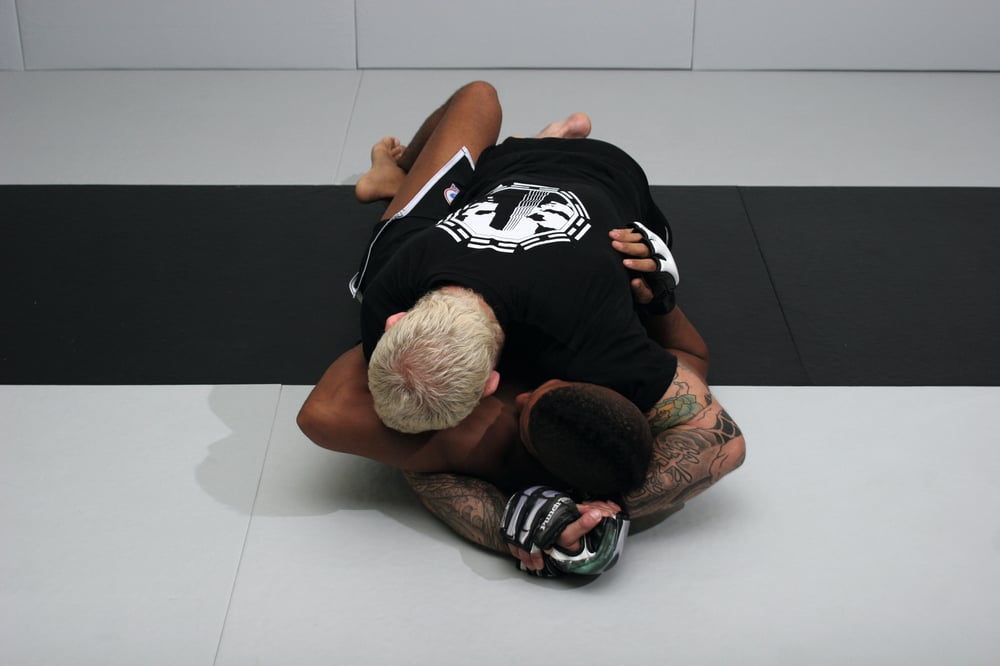
1 Pete is in Jason's half guard. He obtains an underhook on the far side and, employing shoulder pressure on the near side, takes his spine off line making it hard for Jason to move his hips.
2 Here’s that position from the side ...
3 and a far side view. Note that Pete’s pressing his hips down to prevent Jason from moving his hips and getting onto his side.
4 Pete places his instep on top of Jason’s thigh, levering down on his leg, loosening Jason’s grip.
5 Pete raises his hips up, adding more pressure to Jason’s chin, and starts to slide his back leg through.
6 Pete steps his lead leg out, leaving his far hook in to neutralize Jason’s leg and prevent reguarding.
7 Pete levers up Jason’s elbow and sits through under the arm, switching his base.
HALF GUARD IN MMA
Battling for control of the underhook generally establishes which man can act effectively from the half guard in a BJJ contest. But with the possibility of ground ‘n’ pound in MMA, the overhook can be an equally effective tool.
1 Pete is on top in Jason’s half guard.
2 Far side view. Note that Pete has an underhook and keeps his head in tight.
3 Jason pushes away on Pete’s hip, helping to move his own hips and get out on his side.
4 Far side view. Once Jason gets to his side he can create enough space to pummel in and establish his underhook.
5 Pete postures up and drives in his overhook, stiffening the arm to prevent Jason using the underhook to get to his knees.
6 From here Pete can cue up a powerful overhand elbow.
7 With his arm trapped by the whizzer, Jason has little cover as the elbow lands.




